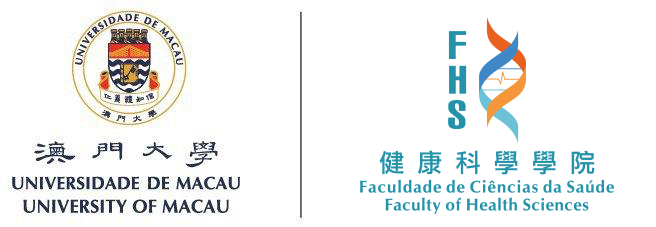Contact Information

Title
Associate Professor
Office
(Office) E12-3008
/ (Lab) E12-3069
Phone
(Office) +853 8822 4518
/ (Lab) +853 8822 9106
Fax
+853 8822 2314
Email
Consultation Hours
Tue, Fri 16:30 – 17:30
Research Team
| Name | Position | Office | Phone | |
|---|---|---|---|---|
| Yingchao GENG | PhD Student (Lab Representative) | E12-3039 | +853 8822 2731 | yc07646@um.edu.mo |
| Xiangchuan WANG | Post-doctoral Fellow | E12-3039 | +853 8822 2731 | xiangchuanwang@um.edu.mo |
| Kai ZHENG | PhD Student | E12-3039 | +853 8822 2731 | |
| Hongguang YANG | PhD Student | E12-3039 | +853 8822 2731 | |
| Yitian HUANG | PhD Student | E12-3039 | +853 8822 2731 | |
| Mengxi WU | PhD Student | E12-3039 | +853 8822 2731 | |
| Xian JU | PhD Student | E12-3039 | +853 8822 2731 | |
| Yuao ZHU | PhD Student | |||
| Yingjun HAN | PhD Student | |||
| Jingyi REN | PhD Student |
| Education | |
| DEng | University of Tokushima, Tokushima, Japan |
| MEng | Zhengzhou University, Zhengzhou, China |
| BEng | Zhengzhou University, Zhengzhou, China |
| Positions | |
| 2021 – Present | Associate Professor, Faculty of Health Sciences, University of Macau |
| 2015 – 2021 | Assistant Professor, Faculty of Health Sciences, University of Macau |
| 2011 – 2014 | Instructor, Massachusetts General Hospital/Harvard Medical School, Boston, USA |
| 2006 – 2011 | Research fellow, Massachusetts General Hospital/Harvard Medical School, Boston, USA |
| 2003 – 2006 | Postdoctoral fellow, Albert Einstein College of Medicine, New York, USA |
| 2003 | Lecturer, University of Tokushima, Tokushima, Japan |
| Research Interests |
| The main research interest of our group is focused on the molecular mechanism of organ morphogenesis. Majority of human diseases are originated from internal organs. Understanding the molecular mechanism of organ formation and maintenance is fundamental to developmental biology and medicine. However, currently the process of organ morphogenesis is not possible to be examined in complex organisms in vivo. We use genetically tractable and structurally simple C. elegans as a model system, employing genetic, biochemical and functional genomics approaches to investigate how organs form and how the shape and size of organs are regulated and maintained.We are also interested in in vivo sphingolipid (SL) homeostatic network regulation. SLs are involved in a wide array of cellular processes and are affected in a variety of diseases ranging from diabetes to cancer, from neurodegenerative- to cardiovascular diseases. Yet, little is known about their roles in the development of these diseases and their potential to serve as drugs or treatment targets. We use the C. elegans model, with a simple set of conserved SLs, to delineate the SL homeostatic network and its regulation on the whole organism level and to explore the link between SL metabolites and the pathology of the diseases linked to defects in SL biosynthesis and metabolism. |
| Representative Publications |
|
| Research Grants | |
| 06/2021 – 06/2024 | Deciphering the mRNP code in epithelial morphogenesis, The Science and Technology Development Fund of Macao SAR (FDCT 0136/2020/A3) |
| 01/2022 – 12/2023 | Development and application of a collection of mRNA toolkit strains for visualizing localization and dynamics of membrane-associated genes in C. elegans epithelia, Multi-Year Research Grant of UM (MYRG 2020-00163-FHS) |
| 01/2020 – 12/2021 | Establishment of a C. elegans model of HSAN1 disease, Multi-Year Research Grant of UM (MYRG 2019-00063-FHS) |
| 10/2018 – 10/2021 | Role of cytoskeleton modulators in apical membrane biogenesis during tubular organ formation, The Science and Technology Development Fund of Macao SAR (FDCT 050/2018/A2) |
| 10/2018 – 10/2021 | The mechanistic study on the functional role of a novel ARF-6 effector SAC-1/Sac1p in the regulation of endosomal PI(4,5)P2 level during early endosome to recycling endosome transport, FDCT-MOST joint grant (FDCT 018/2017/AMJ) |
| 01/2018 – 12/2020 | Sphingolipidome Analysis in C. elegans, Multi-Year Research Grant of UM (MYRG 2017-00082-FHS) |
| 09/2016 – 08/2019 | A role of myosin phosphorylation in microvillus inclusion disease and related syndromes, Multi-Year Research Grant of UM (MYRG 2016-00066-FHS) |
| 01/2016 – 01/2019 | RNAi-based screens identify tube morphogenesis genes in the C. elegans gonad systemRNAi, The Science and Technology Development Fund of Macao SAR (FDCT 060/2015/A2) |
| 02/2015 – 02/2018 | RNAi screen-based identification of genes functioning in spermatheca morphogenesis in C. elegans, Start-up Research Grant of UM (SRG 2015-00005-FHS) |

